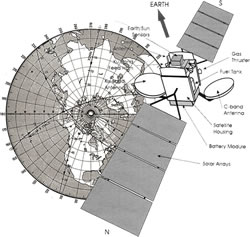 Much has already been written about these new satellite radio ratings numbers released by Arbitron from the Spring ’07 survey. Some are questioning the accuracy of the data, suggesting that listening levels are understated, given the challenging task of recording channel numbers from XM and/or Sirius stations, and other methodological aspects. I will leave this discussion to the ratings research mavens to haggle over, but the thrust of these numbers and their implications are obvious.
Much has already been written about these new satellite radio ratings numbers released by Arbitron from the Spring ’07 survey. Some are questioning the accuracy of the data, suggesting that listening levels are understated, given the challenging task of recording channel numbers from XM and/or Sirius stations, and other methodological aspects. I will leave this discussion to the ratings research mavens to haggle over, but the thrust of these numbers and their implications are obvious.
As we have been pointing out over the past couple of years, satellite radio is an issue for commercial radio operators, but there are other more encompassing threats that challenge traditional listening habits. Mobile phones, iPods, and the notion of CVC – control, variety, choice – are issues that broadcasters will grapple with moving forward.
In fact, our most recent Tech Poll, conducted earlier this year, suggested that satellite radio’s growth is stalling out, and this may be accentuated by this long waiting period that XM and Sirius are enduring as the merger question is being decided. Clearly, the union of the two services, and subsequent pricing adjustments and packaging could make satellite radio a larger factor in 2008 and beyond. But for now, XM and Sirius emerge as niche players, and satellite radio is rapidly becoming a medium that had potential but is not having the promised impact.
Consider that Howard Stern’s reported cume audience is in the 1.2 million range. In a good book at WXRK, WYSP, and WBCN, he easily topped those numbers. Clearly, he is now broadcasting on a much smaller stage, which is one of the reasons why you just don’t hear people say "Did you hear what Howard said this morning?"
It is also of note that many of the big names that XM and Sirius threw millions of dollars at are delivering at the levels of Des Moines FM stations – or lower. Again, even if these ratings are 25% lower than "reality," satellite radio’s chieftains have to be calculating the ROI on stars like Martha Stewart, Oprah, and other big name celebrities. While terrestrial broadcasters may not be spending enough to attract and nurture household names, satellite radio’s "drunken sailor" spending has to be questioned at some point. In XM’s recent release of its third quarter financials, losses have widened from nearly $84 million to more than $145 million. Can you imagine a commercial broadcaster having to continue to explain this level of failure to company shareholders?
As I suggested in an Inside Radio piece, the ratings results of the hundreds of satellite radio channels could serve as a template or primer for traditional broadcasters, seeking compelling programming for HD2 channels. While it’s true that the "Long Tail" effect of listeners seeking cool, niche programming is more definitely in play in these ratings, it’s also a fact that the more mass appeal channels attract the most listeners. Maybe Paul Drew and Bill Drake are somewhere laughing at this "revelation," because playing the hits has always attracted the most listeners – in whatever medium you choose. Perhaps satellite radio’s niche channels bring in a wide diverse audience of interested subscribers, but how can executives rationalize these incredible expenses in order to grow new signups?
- Can Radio Afford To Miss The Short Videos Boat? - April 22, 2025
- Media And Technology In 2025: Believe It Or Not! - April 18, 2025
- In Radio, You Just Never Know - April 17, 2025




Leave a Reply